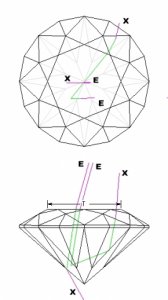- Joined
- Apr 22, 2004
- Messages
- 38,363
I recall someone on PS asking about the critical angles for coloured gemstones (similar to critical angles for ideal cut colourless diamonds) and I replied that it will vary for each gem variety. While the answer is probably too generic for the poster, this PDF address that question a little, in addition to providing other factors that lapidaries have to contend with to bring out the best of any gemstone.
http://www.cigem.ca/pdf/sandrine.pdf
http://www.cigem.ca/pdf/sandrine.pdf




300x240.png)